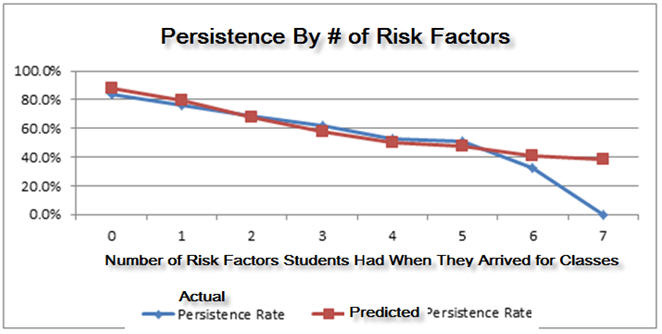enrollment
Taking early-alert and intervention programs to the next level using today’s technologies
For many years, early-alert and intervention programs have been a central piece of student retention programming on college campuses. Now, recent innovations are taking these programs further.
Across higher education, our 2013 report on college student retention practices shows nine of every 10 colleges and universities—four-year and two-year, private and public—report having an early-alert and intervention system. But the report also shows that triggers for the alerts have changed over the years, thanks in part to today’s technologies.
For example, many institutions now use tracking software to trigger alerts by monitoring student class performance and attendance. Other institutions ask incoming students to self-reveal their needs using early-alert online surveys even before classes begin. Still other institutions are pinpointing incoming students’ risk levels using statistical modeling and analytics. Many campuses use multiple, integrated approaches.
One specific innovation that has emerged is predictive modeling. For example, The Student Retention Predictor™ from Noel-Levitz uses statistical modeling and analytics to trigger early alerts before classes begin. Below is a chart that shows the precision of this tool.
Fall 2013 actual vs. predicted retention results by the number of risk factors students had when they began classes a year earlier, at colleges and universities using Noel-Levitz’s predictive modeling for retention

As the chart above indicates, a highly accurate early-alert and intervention process can now be triggered by reliable, evidence-based risk factors that can be identified before students begin classes. By knowing how many risk factors each student has, all the members of an incoming class can immediately be sorted and flagged into categories such as “high risk,” “moderate risk,” “low risk,” etc. based on enrolling student characteristics, with priority given to students with multiple risk factors.
So what are these risk factors or enrolling student characteristics? They are data on enrolled students’ backgrounds that come from an institution’s admissions office, financial aid department, previous institutional outcomes, other enrolled student data that an institution has available, and data that can be pulled into the study from publicly-available external databases such as the factors tracked by consumer marketers. Key for practitioners, these data are available at the time of enrollment and thus interventions can begin immediately, without waiting for faculty or student affairs staff to raise alerts.
At first glance, this approach may appear to be nothing new. For years, many institutions have used their own, in-house modeling to isolate one, two, or three predictive variables that correlate to persistence—such as a student’s high school GPA or a student’s score on the ACT or SAT. But predictive modeling can take this approach another big step forward by pooling the predictive power of much larger groups of variables that predict retention. One might ask, for example, “How predictive is the high school GPA versus the SAT score versus the other 150 variables statistically identified as predictive for students attending our institution?”
Institutions using this technology are able to target and prioritize their early interventions using these data on identifiable cohorts of their students. For example, institutions may choose to administer mandatory advising and/or counseling sessions to incoming students who are flagged as “high risk” upon entry, while extending normal outreach and communication to students flagged as “low risk.”
In addition, institutions using predictive modeling work to minimize the identified risk factors to reduce their impact. Further, many campuses are integrating predictive modeling with other early-intervention triggers such as online surveys and course attendance. For example, to individualize their interventions, some campuses use Noel-Levitz’s early-alert online surveys to identify each individual student’s academic and social motivation, coping skills, and areas of receptivity to institutional support. With the combination of predictive modeling data and this noncognitive motivational survey data, advising sessions, support services, and classroom retention strategies become even more relevant and effective.
Looking for ways to improve retention and completion rates at your institution?
I hope you found this post helpful. I would be happy to discuss effective strategies with you for improving retention and completion rates. If you have any questions about how to integrate a new approach or would like to bounce off an idea you are considering, please send me an email.
